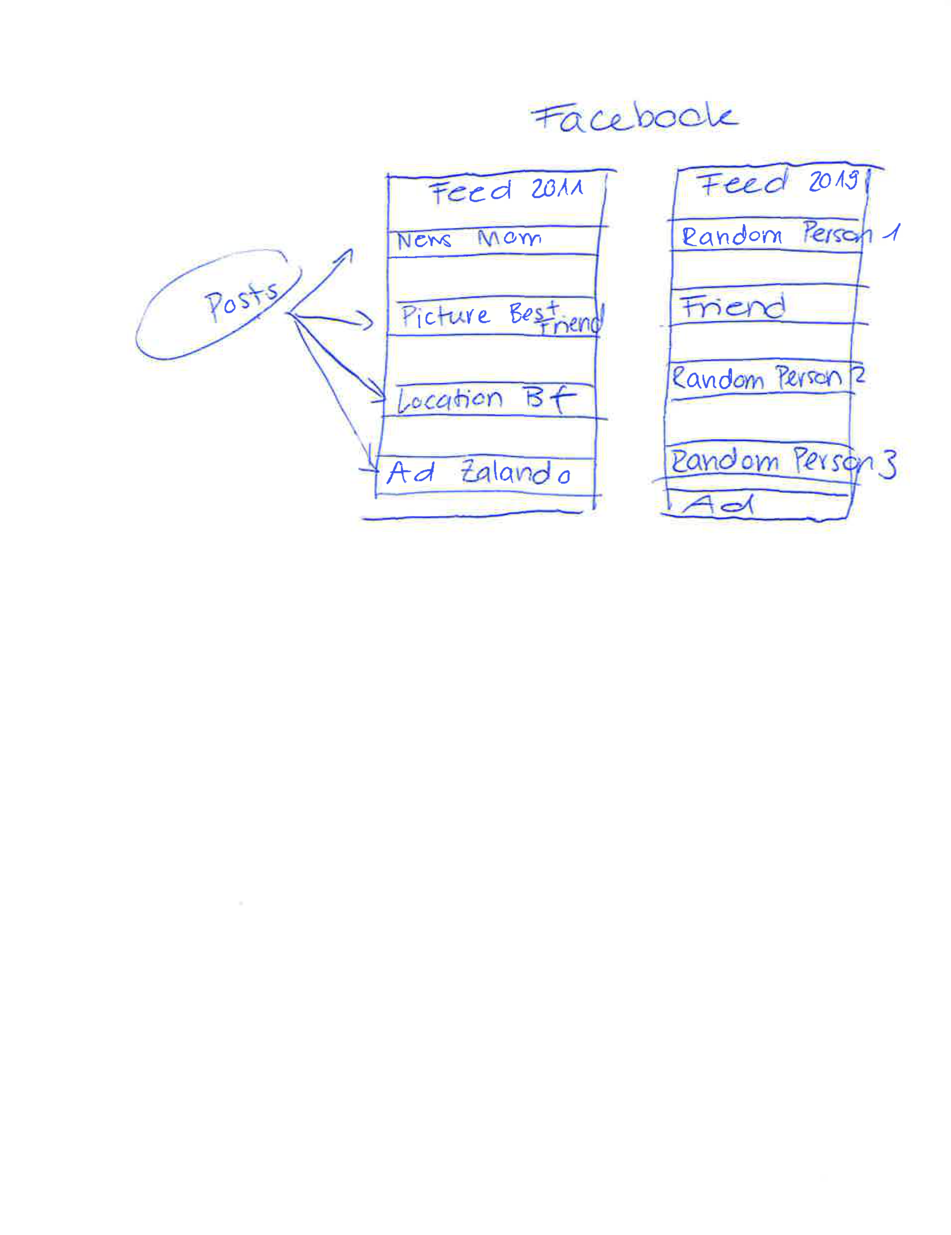An algorithm, drawn by a 25-year-old female law student and legal assistant in Switzerland.

It's supposed to represent a screen. I'm doing it very creatively. You can tell I'm a social media addicted. [laughs] [laughs] No. I write down more than I draw. That's okay, too. Okay, can you explain what you drew? Well, I compared it to some social network, any social network. In the past, people didn't work with algorithms and it was just that: What used to be posted, so after time... Chronologically. Chronologically, exactly. What was posted by the people you were probably friends with, who you followed. And today it's like this: Yes, there is an algorithm and it decides what you actually want to see, so to speak. And things you googled, or who you follow, or what hashtags you use, or - I don't know what combinations there are. And I notice that too. If you just quickly google something, then you've got the advertisement full, because it then links to all the apps. Yeah. Yeah, algorithm. Yeah, algorithm. Okay. And in what context did you learn about algorithm? Is it all experience-base? Yes, especially with the Internet - about how it's all connected and depending on how fast it goes and when you turn something off, it goes so fast and there are ads everywhere. For myself with shopping. If I shop online, then exactly what I have looked at will come up. It suggests to me: Oh, you might like that too! Or the hotels it also connects them immediately or yes. Instagram itself, where somehow - I found that out the other day, on Watson [Swiss online newspaper]! If you use a filter from Instagram, then apparently the algorithm prefers that you use a filter from Instagram itself. Then it will go higher or something like that, you'll read about it in the newspaper when somebody switches to a new algorithm. Okay.